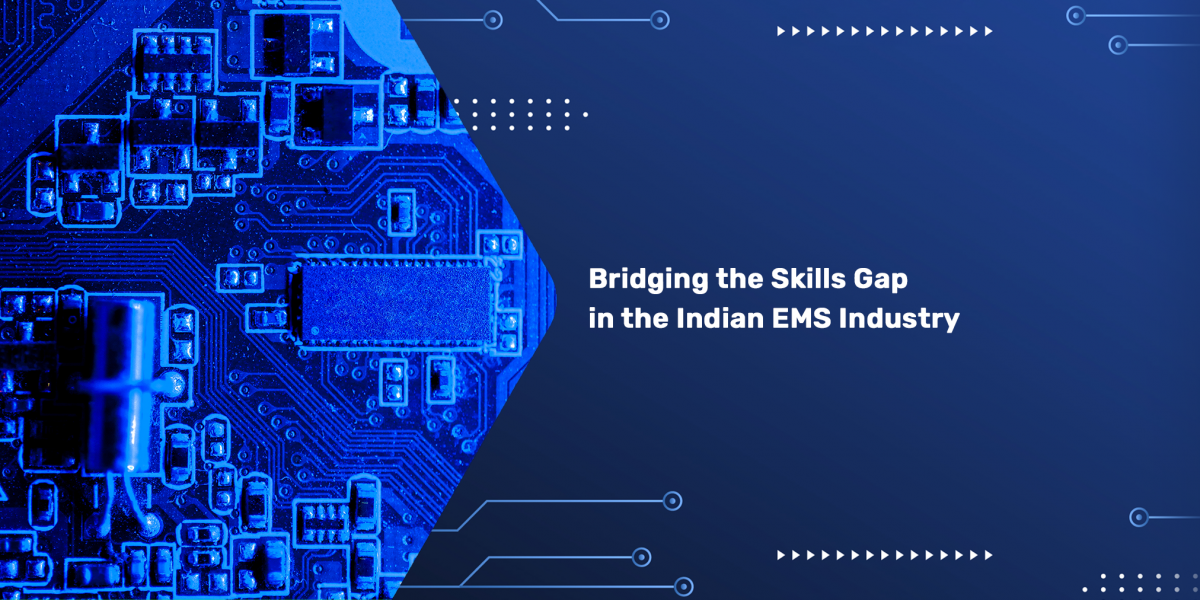Bridging the Skills Gap in the Indian EMS Industry
The Indian Electronics Manufacturing Services (EMS) industry is growing rapidly, driven by government initiatives like Make in India, increasing consumer demand, and global supply chain diversification. However, this growth is being challenged by a critical issue: the electronics manufacturing skills shortage.
A robust ecosystem can only thrive if the EMS industry skills gap in India is effectively addressed. This calls for targeted efforts in workforce development in the Indian EMS sector to match the pace of technological advancements.
Understanding the Skills Gap in Indian EMS
The Indian EMS sector demands proficiency in areas such as SMT assembly, robotics, AI, IoT, and quality assurance. However, the talent pool often lacks industry-relevant exposure due to:
- Outdated curricula that don’t reflect modern EMS requirements
- Limited practical training in key electronics manufacturing processes
- Regional imbalances where access to training in rural areas remains scarce
This mismatch leads to a skills gap in EMS workforce training in India, hindering productivity, efficiency, and innovation.
The Importance of Bridging the Skills Gap
Addressing the electronics manufacturing skills shortage is vital for:
- Boosting productivity through efficient machine handling, reducing downtime and increasing output
- Enhancing product quality and compliance with global standards
- Driving innovation, allowing EMS companies to lead with new-age tech
A well-trained EMS workforce strengthens India’s position in the global supply chain and promotes sustainable industry growth.
Solutions to Bridge the Skills Gap
1. Focused Training and Upskilling Programs
Many EMS companies are launching structured programs to upskill their workforce. These include training in:
- SMT line operations and PCB assembly
- Quality control techniques like Automated Optical Inspection AOI and testing protocols
- Soft skills such as teamwork, problem-solving and communication
2. Collaborations with Educational Institutions
Partnerships between EMS companies and technical institutions play a vital role in addressing the skills gap. Effective collaborations include:
- Setting up centers of excellence for EMS
- Co-developing skill-oriented courses with hands-on modules
- Offering internships, apprenticeships, and industrial visits
3. Government-Led Initiatives
Programs like Skill India and the Pradhan Mantri Kaushal Vikas Yojana (PMKVY) are pivotal in creating a skilled workforce for the EMS sector. These initiatives:
• Provide funding and support for vocational training programs.
• Focus on training in emerging technologies like AI and IoT.
• Ensure inclusivity by reaching underrepresented groups, including women and rural youth.
4. Leveraging Technology for Training
EMS companies are increasingly using digital tools to enhance training efficiency. Virtual reality (VR) and augmented reality (AR) simulations provide immersive learning experiences, while online platforms offer flexible learning options for employees.
The Road Ahead
To stay ahead in the global EMS race, India must prioritize upskilling strategies in the Indian EMS industry. Key focus areas include:
- Expanding access to training in underserved areas
- Promoting continuous learning and career progression skills to keep pace with technological advancements
- Fostering industry-academia collaboration by strengthening connections between EMS companies and educational institutions to build a dynamic talent pool.
A long-term commitment from all stakeholders is necessary to overcome the challenges in EMS workforce training in India and ensure sustainable growth.

Conclusion: Building a Skilled Workforce for a Bright Future
Bridging the skills gap is the cornerstone of India’s EMS transformation. With the right blend of training programs, policy support, and industry-academia partnerships, India can nurture a future-ready workforce. The time to invest in people is now—for a resilient, globally competitive EMS industry.













